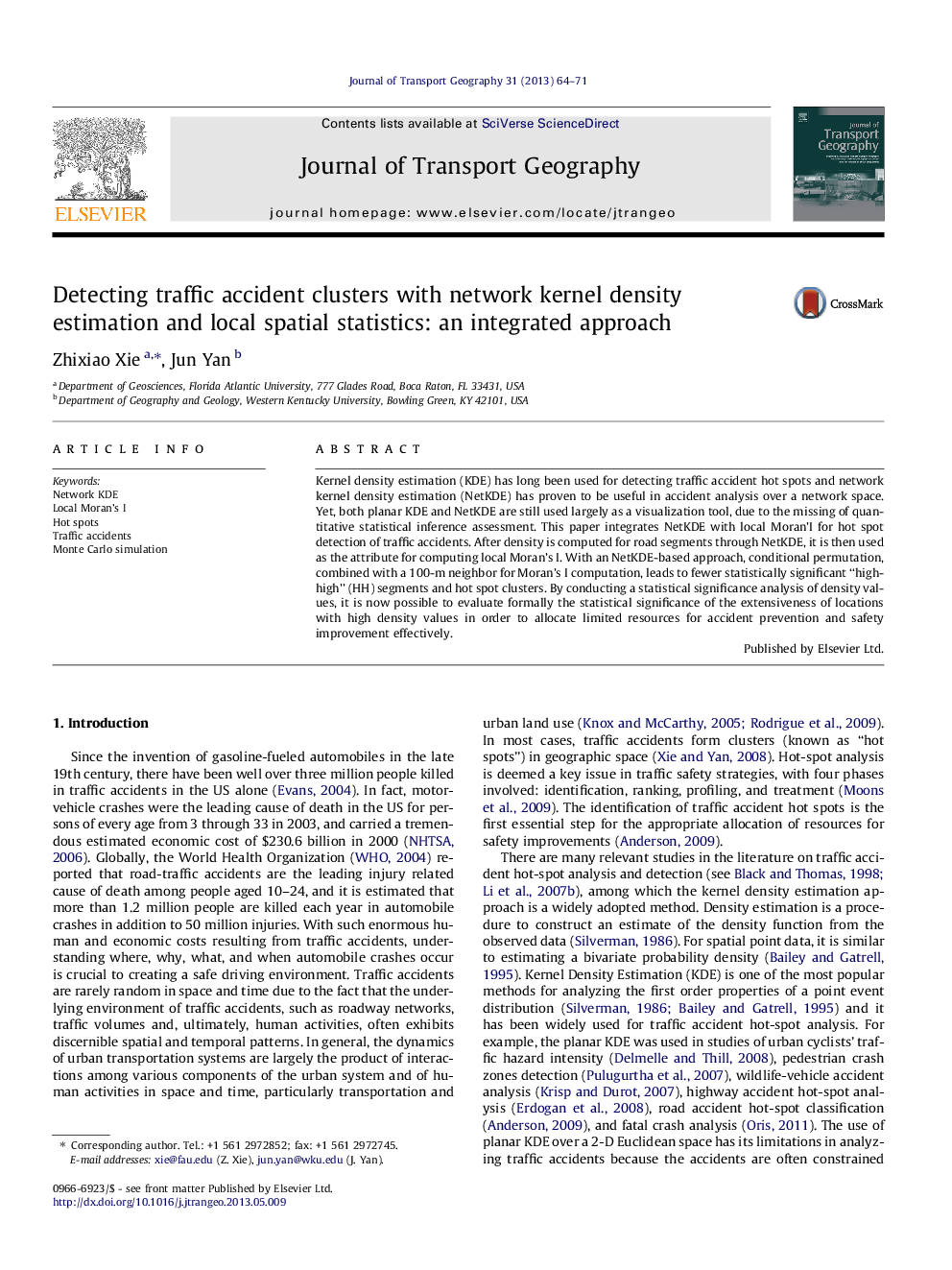| Article ID | Journal | Published Year | Pages | File Type |
|---|---|---|---|---|
| 7486391 | Journal of Transport Geography | 2013 | 8 Pages |
Abstract
Kernel density estimation (KDE) has long been used for detecting traffic accident hot spots and network kernel density estimation (NetKDE) has proven to be useful in accident analysis over a network space. Yet, both planar KDE and NetKDE are still used largely as a visualization tool, due to the missing of quantitative statistical inference assessment. This paper integrates NetKDE with local Moran'I for hot spot detection of traffic accidents. After density is computed for road segments through NetKDE, it is then used as the attribute for computing local Moran's I. With an NetKDE-based approach, conditional permutation, combined with a 100-m neighbor for Moran's I computation, leads to fewer statistically significant “high-high” (HH) segments and hot spot clusters. By conducting a statistical significance analysis of density values, it is now possible to evaluate formally the statistical significance of the extensiveness of locations with high density values in order to allocate limited resources for accident prevention and safety improvement effectively.
Related Topics
Life Sciences
Environmental Science
Environmental Science (General)
Authors
Zhixiao Xie, Jun Yan,
